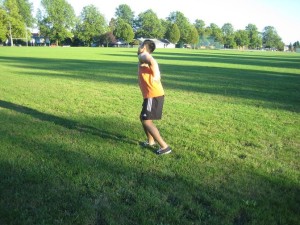Discitis involves inflammation between the intervertebral spinal discs. These discs are positioned amidst the vertebrae. The spaces between them are known as the intervertebral disc spaces. If there is swelling in these spaces, it places pressure on the discs, resulting to discomfort or pain.
The condition typically affects young children and often accompanied by osteomyelitis. It is important to note that discitis is one of the various forms of spinal inflammation where the surrounding joints, tissues and vertebrae of the spine become irritated and inflamed.
Both bacterial or viral infections can cause discitis as well as an autoimmune disorder. An infection or autoimmune response triggers inflammation and swelling that results to pain and other symptoms.
What are the indications?

If an individual develops discitis, he/she is likely to suffer from intense pain in the spine. The lower and upper back might be affected.
Other symptoms that are present might include:
- Back stiffness
- Changes in the posture
- Fever
- Abdominal pain
- Difficulty performing regular mobility activities
Risk factors
One is more likely to develop discitis if:
- Diagnosed with an autoimmune ailment
- Using intravenous drugs
- The individual has a weakened immune system
- Recovering from surgery
Children below the age of 10 years old are prone to develop the condition as well.
Management
If an individual is diagnosed with discitis, the doctor might prescribe medications. Antibiotics are given for a bacterial infection or anti-inflammatory medications to manage an autoimmune reaction.
In some cases, steroids are given to deal with severe or chronic cases of discitis. Non-steroidal anti-inflammatory drugs (NSAIDs) such as ibuprofen can be given for pain relief.
The doctor might also recommend other measures such as:
- Changes to daily activities
- Bed rest
- Using a back brace or other supportive equipment
In some cases of discitis, the doctor might suggest invasive measures. In rare instances, surgery might be required to resolve issues originating from discitis and osteomyelitis. There is a need to reconstruct regions of the spine to improve its function and mobility.
